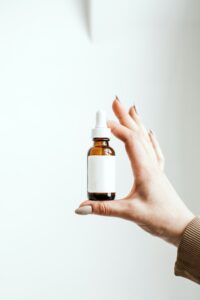What Ingredients to Avoid

When it comes to buying beauty products, it can be overwhelming to navigate the world of ingredients and product labels. But understanding what ingredients to avoid can be crucial to maintaining healthy skin and hair. Here are some tips on how to decode product labels and understand what ingredients to avoid.
Understanding Ingredients Lists
The ingredients list on a product label is listed in order of concentration, from highest to lowest. This means that the first few ingredients on the list are the ones that make up the majority of the product. If you see an ingredient listed towards the bottom of the list, it means that it is present in a lower concentration.
Common Harmful Ingredients to Avoid
Parabens
One of the most common harmful ingredients found in beauty products is parabens. Parabens are synthetic preservatives that are used to extend the shelf life of products. They have been linked to hormone disruption and have been found in breast cancer tissue. Look out for ingredients such as methylparaben, propylparaben, butylparaben, and ethylparaben.
Sodium Lauryl Sulfate (SLS)
Another harmful ingredient to watch out for is sodium lauryl sulfate (SLS). SLS is a foaming agent that is often found in shampoos and body washes. It can be harsh on the skin and scalp, leading to irritation and dryness. Instead, opt for clean beauty products that use gentler alternatives such as sodium coco-sulfate or decyl glucoside.
Fragrance
Fragrance is another ingredient to watch out for. The term “fragrance” on a product label can be a catch-all term for a variety of synthetic chemicals that can cause irritation or allergic reactions. Look out for products that use natural fragrances from essential oils or that are labeled “fragrance-free”.
Phthalates
Phthalates are a group of chemicals that are often used to make fragrances last longer. They have been linked to reproductive and developmental harm and have been banned in some countries. Look out for ingredients such as diethyl phthalate (DEP), dibutyl phthalate (DBP), and dimethyl phthalate (DMP).
Synthetic Colors
Be wary of products that contain synthetic colors. These are often listed as FD&C or D&C followed by a color and number. Synthetic colors have been linked to cancer and have been banned in some countries. Look out for products that use natural ingredients such as beetroot or turmeric.
Decoding Product Labels
One easy way to ensure that the products you’re buying are safe is to look for products that have been certified by reputable organizations such as the Environmental Working Group (EWG) or the Natural Products Association (NPA). These certifications indicate that a product meets certain safety and environmental standards.
Researching Brands and Ingredients
Another way to ensure that the products you’re buying are safe is to do some research on the brand and the ingredients they use. Many brands will list the natural ingredients they use and explain why they are safe and effective. If you’re unsure about an ingredient, do some research online to see what the experts have to say.
Choosing Natural and Organic Products
In addition to avoiding harmful ingredients, there are also many natural and organic products available that can be gentler on your skin and hair. Look for clean beauty products that use natural ingredients such as aloe vera, chamomile, and lavender, which are known for their soothing and nourishing properties.
Conclusion
Understanding how to decode product labels and what ingredients to avoid can be crucial to maintaining healthy skin and hair. By avoiding harmful ingredients such as parabens, SLS, fragrance, phthalates, and synthetic colors, and opting for natural and organic products, you can ensure that the products you’re using are safe and effective. Don’t be afraid to do some research on the brands and ingredients you’re considering and look for certifications from reputable organizations. With a little knowledge and effort, you can make informed decisions about the products you use and protect your health and well-being.

